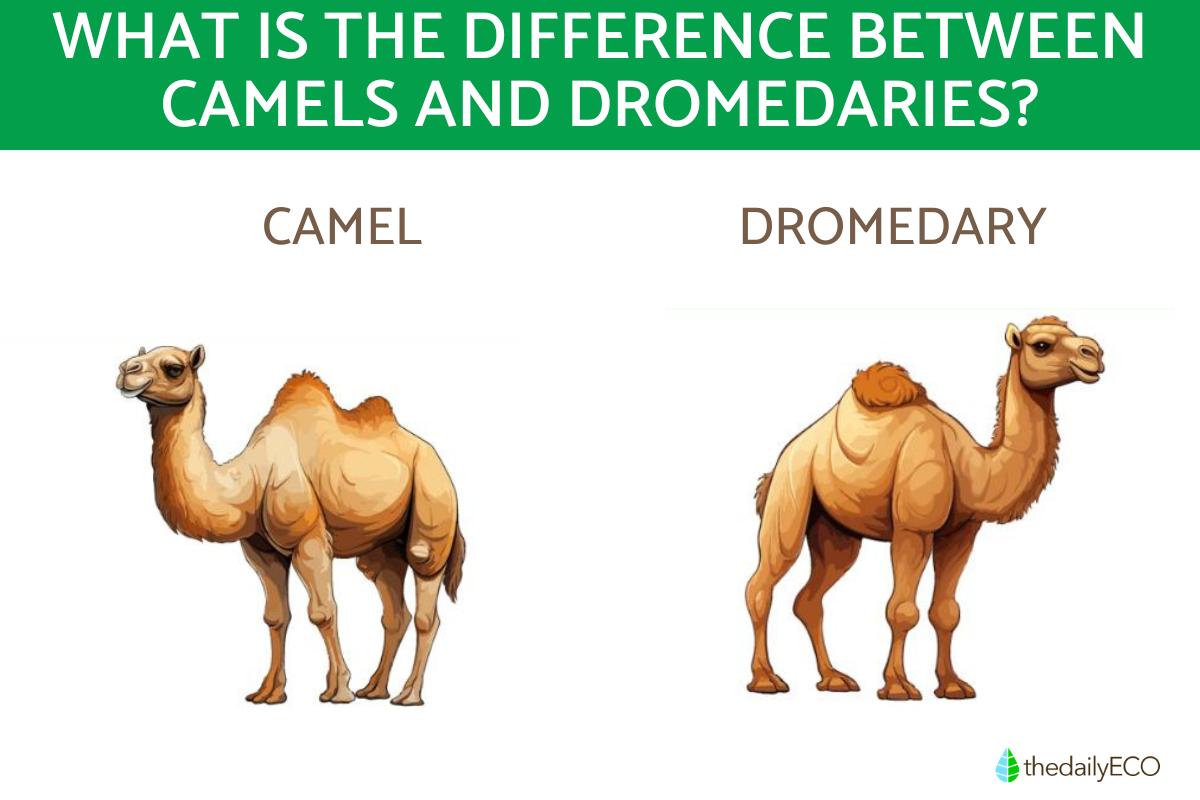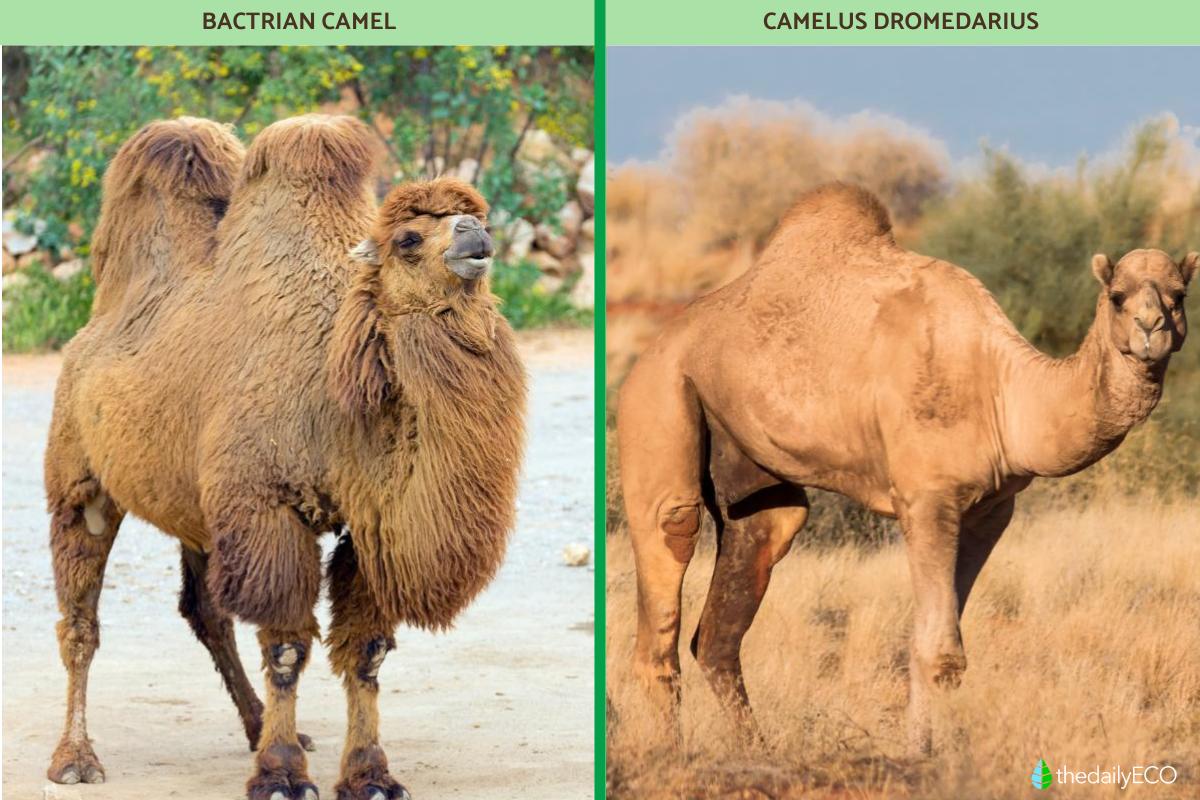What Is the Difference between Camels and Dromedaries?


Camels and dromedaries are often confused for one another, but these two animals, while closely related, have distinct characteristics that set them apart. Both are well-adapted to harsh desert environments, yet their physical differences, habitats, and uses throughout history are unique. Understanding these differences can help clarify which camel species thrives where and how each has been utilized by various cultures.
In this article by thedailyECO, we’ll break down the key distinctions between camels and dromedaries, from their humps to their adaptations, giving you a clear understanding of what makes each of these remarkable animals special.
Classification
Camels and dromedaries are considered different species, within the genus Camelus. This family also includes llamas and alpacas, which are found in South America. While they share many similarities, their distinct origins, physical characteristics, and adaptations to their environments set them apart.
- Camels belong to the species Camelus bactrianus. They are native to Central Asia and typically have two humps.
- Dromedaries belong to the species Camelus dromedarius. They originated in the Arabian Peninsula and North Africa and have only one hump.
Despite their differences, camels and dromedaries share a common ancestor, indicating a close evolutionary relationship. This shared ancestry is evident in their similar anatomical features and physiological functions.

Origin and habitat
Camels originated in the vast steppes and deserts of Central Asia, adapting to both hot and cold climates. Their native range likely encompassed regions now part of Kazakhstan, Mongolia, and China.
Dromedaries, on the other hand, originated in the arid regions of the Arabian Peninsula and North Africa. Their physical characteristics and behaviors are specifically adapted to the harsh conditions of deserts, including extreme heat, lack of water, and sandy terrain.
Number of humps
One of the most distinctive features that differentiate these animals is the number of humps. The dromedary has a single hump, while the Bactrian camel possesses two.
Contrary to popular belief, the hump does not store water, although it may indirectly aid in hydration. Instead, the hump is primarily a reserve for excess fat accumulated during favorable conditions, which can be utilized when food is scarce.
Find out what makes the desert such a unique habitat for camels and dromedaries. Learn about their harsh yet fascinating environment in this other article.

Fur type
Another key difference between the two species is their fur. The dromedary has shorter, less dense fur, making it well-suited for hot climates.
In contrast, the Bactrian camel features thicker, longer fur that provides protection against the extremely low temperatures found in cold deserts. Notably, they have long hair on their necks and throats that can grow up to 25 centimeters (about 10 inches) in length.
Physical build
Dromedaries tend to be more slender, with longer limbs, making them faster and move more efficiently in sandy environments. Their smaller size can also be advantageous in areas with limited resources.
In contrast, camels are more robust and heavier, with shorter legs. This enables them to carry heavier loads and withstand harsher conditions. Their larger size and bulk help them retain heat in cold environments.
Typically, a dromedary can reach a height of about 1.8 to 2 meters (approximately 5.9 to 6.6 feet), while Bactrian camels usually stand around 1.7 to 2.2 meters (about 5.6 to 7.2 feet) tall.
Temperament
Camels are generally considered more docile and easier to handle than dromedaries.
They are known for their calm demeanor, patience, and adaptability. Dromedaries, on the other hand, are often described as more energetic and spirited. They can be more excitable and require experienced handlers. While these are general characteristics, individual temperaments can vary within each species.
Shared characteristics of camels and dromedaries
Now that we have examined the differences between these two animals, let’s explore the aspects that make them similar:
- Both species are diurnal animals, meaning they are most active during the day.
- Both are well-adapted to survive in harsh, arid environments, allowing them to withstand extreme temperatures and limited water availability.
- Both are herbivores, capable of consuming a wide variety of vegetation, including tough and sometimes thorny plants.
- Neither species has hooves; instead, they have two-toed feet with soft pads, which provide better traction on sand and uneven terrain.
- Both can be found in social groups, although they may also be solitary, depending on environmental conditions and social structures.
- Both species have been domesticated by humans for thousands of years, serving as pack animals and sources of food (meat, milk, and fiber).
- Dromedaries and Bactrian camels can interbreed, producing hybrids known as tulus or bukhts, which can inherit characteristics from both parent species.
- Both exhibit unique reproductive behaviors and adaptations, such as males displaying physical characteristics (like the doula) during mating seasons to attract females.
- Both have great cultural and economic importance in various regions, providing resources and serving as symbols of endurance in harsh climates.
If you’re intrigued by camels and dromedaries, you’ll want to explore the diverse world of their hoofed relatives.

Examples of camels and dromedaries
There are three living species of camels today:
- Camelus dromedarius: commonly known as the dromedary or Arabian camel, this species is characterized by its single hump and is well-adapted to hot desert environments.
- Camelus bactrianus: known as the domestic Bactrian camel, this species features two humps and is primarily found in Central Asia, where it thrives in cold desert conditions.
- Camelus ferus: this species, commonly referred to as the wild camel or wild Bactrian camel, inhabits the Gobi and Gashun Gobi deserts of northwestern China and Mongolia. It is the only species that has not been domesticated and is classified as critically endangered due to threats from hunting, predation by wolves, and habitat degradation.
In addition to these living species, three camel species have unfortunately gone extinct:
- Camelus gigas: known as the giant camel, this species was larger than modern camels and lived in various regions of the world.
- Camelus sivalensis: This species was identified through fossil remains found in South Asia and is believed to have adapted to a variety of environments.
- Camelus moreli: Also referred to as the Syrian camel, this species once roamed the Middle East before becoming extinct.
Curious how camels compare to their South American relatives? Dive into the fascinating differences between llamas and alpacas in this other article.

If you want to read similar articles to What Is the Difference between Camels and Dromedaries?, we recommend you visit our Facts about animals category.
- Gutierrez C., Corbera JA, Morales M., Juste MC, Montoya JA (sf). Some adaptive aspects of camelids to their environment.
- Romero, J. Á., and Legorreta, RAM (2005). Camelus bactrianus Linnaeus, 1758 General information.









